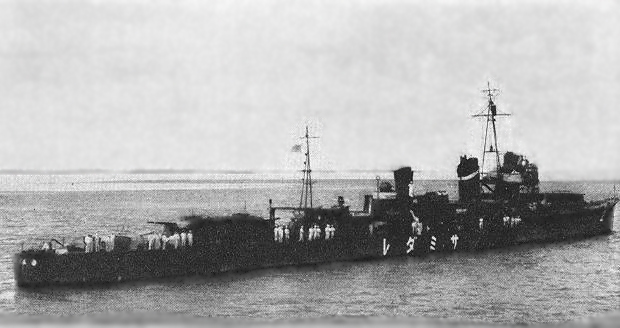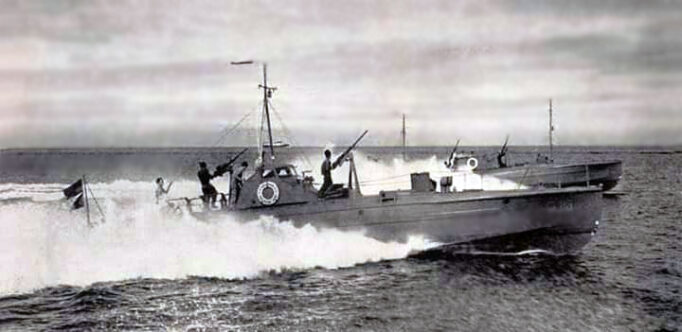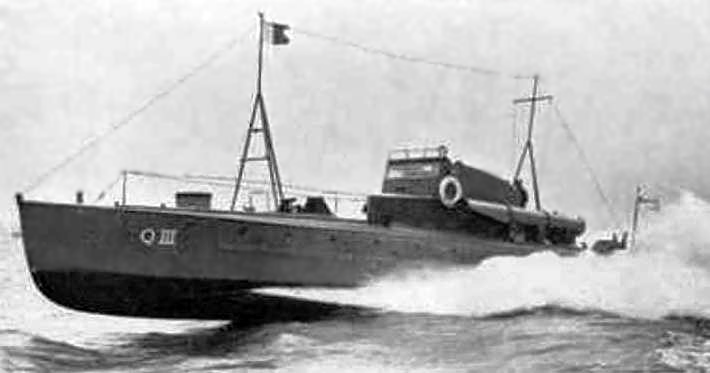On June 1939, the second Philippine Q-Boat arrived in Manila and was named Luzon after one of the three main Island groups of the country, and was given hull number Q-111. She is 10 feet longer than Q-112 and has a cruising speed of 41 knots with a crew of 2 Officers and 4 Enlisted Personnel. Q-111 was the squadron flagship.
Three months earlier on 02-March-1939 the First Philippine Motor Torpedo Boat arrived in Manila aboard the Steamship SS Mecklenburg from Antwerp, Belgium. She was christened “ABRA” after the Province of Abra and with Hull Number Q-112.
Thus begun the Q-Boat mystery of the Philippine Navy, eventually through the years “Q” stood for Quest for Mystery but would also signify as the Quezon Boat for President Quezon as the Off-shore Patrol (OSP), the naval arm of the Philippine Army activated during his tenure.
From 08-December-1941 to 08-April-1942, the Q-Boats of the Off-shore Patrol would be in the thick of action against the Japanese Invasion of the Philippines.
The five (5) Q-Boats of the Off-shore Patrol, the 44-ship Navigation Division of the Philippine Coast Guard under the Bureau of Customs, and Ships of the Philippine Merchant Marine were commissioned into the OSP Reserve. These seagoing forces formed part of the Philippines Naval Defense along with the US Navy’s Motor Torpedo Boat Squadron 3 under LT John D Bulkeley USN along with the US Asiatic Fleet Submarine Tender USS Canopus.
As the dark clouds of Japanese conquests hovered over the archipelago, the Q-Boat Squadron made one final sortie with the plan of escaping the Japanese blockade of Manila and proceeding to Australia to join the other allied forces thereat.
At 2400H on 08-April-1942, preparations were undertaken as the squadron made its final bid for freedom, coming out from Sisiman Cove in the Province of Bataan. MAJ Enrique L Jurado (USNA’34) commanded the Squadron aboard Q-111 Luzon, with CPT Alberto Navarette as Skipper, LT Heracleo Alano as Executive Officer, and LT Abraham Campo as Navigator, with SGT Claro Jimenez, PFC’s Andres Gaceta, Felipe Donato, Florencio Inigo and Jose Villanueva as crew.
The primary objective was to sortie out of Manila and proceed to Corregidor, then to Iloilo, and head for Australia, leaving in echelon formation when the first sign of trouble appeared as the engines of Q-112 Abra gave up, making LT Ramon A Alcaraz (PMA’40) withdraw from the formation, scuttling the gunship near Navotas.
The Q-115 Baler was also having engine problems as it was only making 12 knots from its usual 30 knots. All was well, but upon approaching the mouth of Manila Bay, Japanese Land-based Naval Aircraft of the 1st Kokutai engaged the Q-Boats. In the ensuing melee, one of the Japanese planes was shot down.
As per LT Campo’s narration, the remaining Japanese planes circled the squadron as if waiting for something and a few minutes later, a lookout on one of the Q-Boats’ crew shouted “Ships ahead!”

HIJMS Samidare

HIJMS Murasame
These ships were the Imperial Japanese Navy Destroyers HIJMS SAMIDARE and MURASAME, part of the Japanese blockade and already veterans of earlier engagements in the Pacific.
LT Campo’s narration of the battle where the Q-boats were embroiled gave a good account of the officers and crew but the Japanese naval gunners were good in deflection. The Q-boats guns counter-fired and Mark 14 Torpedoes were launched though missing their target for lack of range to reach the enemy.
In a few seconds, Q-111 Luzon was on fire, and was scuttled off to Looc, Cavite headed for Nasugbu, Batangas.
The fate of the Q-Boats on that day is as follows: Q-111 Luzon was scuttled on 09-April-1942- between Looc, Cavite and Nasugbu, Batangas.
Q-112 Abra was scuttled on 09-April-1942 off Navotas. Both Q-111 Luzon and Q-112 Abra were British-built 55 FT and 65 FT Motor Torpedo Boats, with a max speed of 41 Knots and armed with 2 Anti-Aircraft .50 calibre Guns, 2 Mark 14 Torpedoes, and 2 depth charges. They were the first and second Motor Torpedo Boats used by the Philippine OSP. Q-113 in the foreground, Q-112 behind.

Q-113 in the foreground, Q-112 behind.
Q-113 Agusan was scuttled on 09-April-1942 as part of the United States Armed Forces in the Far East (USAFFE) OPERATION PONTIAC whereby no allied equipment should be taken advantage of the enemy, Agusan’s crew joined the Coast Artillery Corps, while its anti-aircraft weapons were incorporated into the beach defense force.
Q-113 Agusan was the First PURELY PHILIPPINE BUILT TORPEDO BOAT patterned after the British Torpedo Boats. She was built at Engineer Island in Navotas under the supervision of Naval Architect/Civil Engineer Bernardo Abrera. Q-114 Danday named after the wife of MAJ Jurado was the former MV Carmen which was salvaged and refloated by the OSP through the assistance of the MV Carmen’s Marine Engineer Vicente Ty Dela Cruz. She was later burned to escape Japanese
capture in Lamao, Bataan. She was the special operations craft of the OSP as she always handled agents and landing spies behind enemy lines.
Q-115 Baler was the former Presidential Launch that was taken over by the OSP in December 1941. She was captured by the Japanese off Cabra Island with the whole crew and passengers totaling about 23 Filipinos and Americans. The curtain would not be drawn with the defeat of the Q-Boats as the Island Fortress of Corregidor would hold on until 6-May-1942 as the Japanese completed their conquest of the Philippines.
Though the saga of Q-111 Luzon ended off Batangas waters and to many, lost in history after she was scuttled. Unknown to many, she was re-floated and refurbished by the Imperial Japanese Navy and re-commissioned into the IJN on 12-April-1943 as Patrol Boat 114, but was again sunk by US Naval aircraft during their return to the Philippines in 1944. IJN Motor Torpedo 114, the former Q-111.

IJN Motor Torpedo 114, the former Q-111.
Q-111 Luzon holds a distinction of serving three Navies: the British Royal Navy as prior to delivery she was tested by British Crews, the Philippine Navy, and the Imperial Japanese Navy. These small Q-boats were also known as “Suicide Boats.” Officers were taught how to ramrod enemy ships, sacrificing themselves, if necessary to ensure that torpedoes miss. About 66% of the officers and men received the Silver Star from General Douglas MacArthur in January 1942, making this small unit one of the most recognized for heroism and gallantry in action.
Sources:
- The Philippine Navy 1898-1998 by Commodore Regino “DODDS” P Giagonia AFP (RES) Headquarters Philippine Navy, 1999.
- Warships of the Imperial Japanese Navy 1869-1945 by Hansgeorg Jentchura, Dieter Jung and Peter Mickel, Translated by Antony Preston.
- World Navies of World War Two (In Russian).
- E-mail and correspondence with Russian Tugboat Captain Ivan Gogin January 2017 who informed the author of the participation of HIJMS Samidare and HIJMS Murasame.
Photograph Credits:
- Q-III courtesy of the Janes Fighting Ships 1940 Edition “United States Section.”
- HIJMS Murasame original photograph, United States Navy, accessed 06-June-2021
- https://upload.wikimedia.org/wikipedia/commons/2/2f/IJN_DD_Murasame_in_1937_at_Yangtze_River.jpg
- HIJMS Samidare original photograph, United States Navy, accessed 06-June-2021 https://upload.wikimedia.org/wikipedia/commons/7/7d/Samidare-2.jpg 06 June 2021.
- Q-113 and Q-112 from the book The Philippine Navy 1898-1996.
